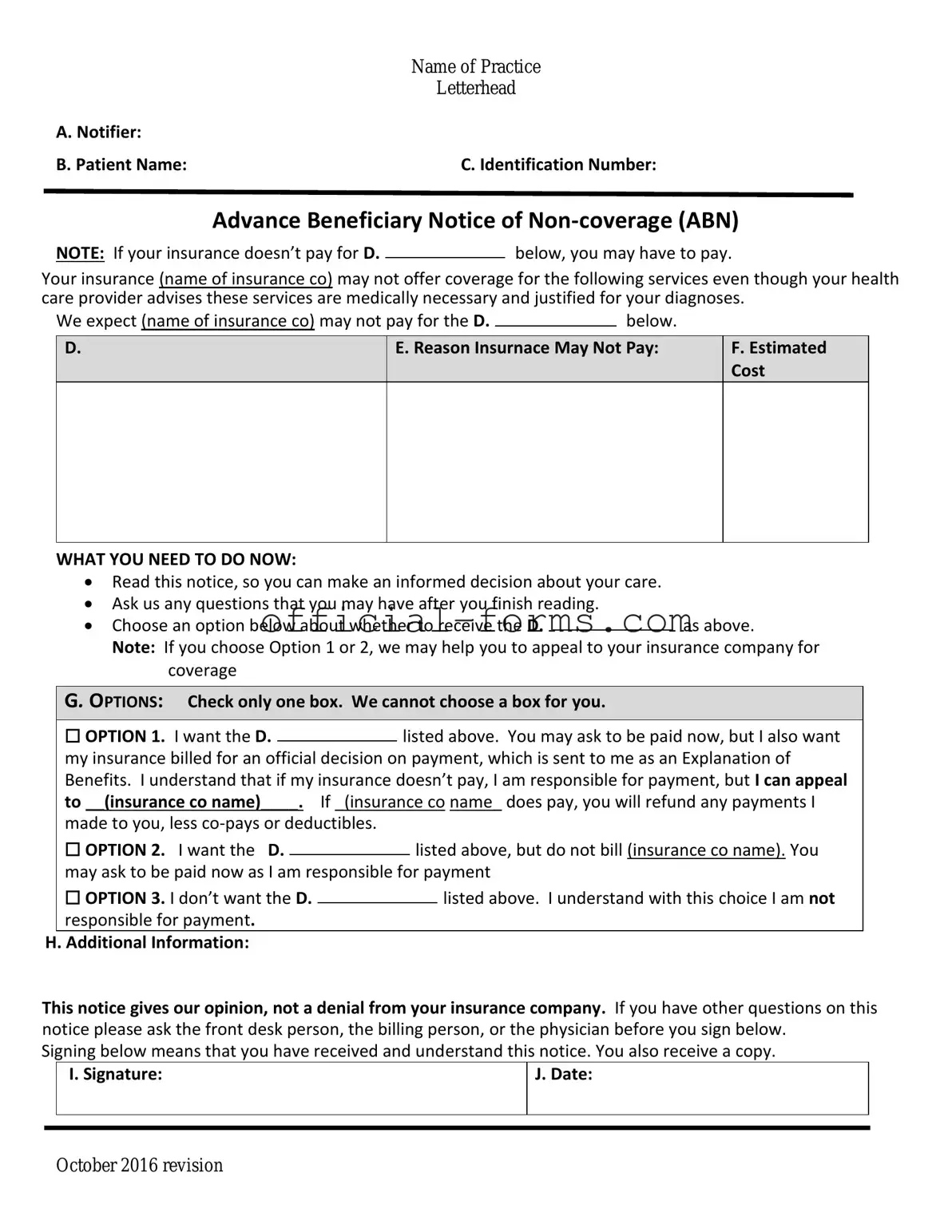Filling out the Advance Beneficiary Notice of Non-coverage (ABN) form can be a straightforward process, yet many individuals make common mistakes that can lead to confusion or denial of coverage. One frequent error is failing to provide accurate patient information. When the patient's name, Medicare number, or date of birth is incorrect, it can result in delays or complications in processing the form.
Another common mistake is neglecting to indicate the specific service or item for which the notice is being issued. The ABN must clearly state the service that may not be covered. If this information is vague or omitted, it can lead to misunderstandings about the patient's financial responsibility.
People often overlook the importance of explaining the reason for non-coverage. The form requires a clear rationale as to why the provider believes Medicare may deny payment. Without this explanation, the patient may not fully understand their potential financial liability.
Additionally, some individuals fail to sign and date the form. A signature is essential as it indicates the patient's acknowledgment of the potential non-coverage. Without a signature, the form may be considered incomplete, leading to complications in billing.
Another mistake involves not providing the patient with a copy of the completed ABN. Patients should always receive a copy for their records. This practice ensures that they have documentation of the notice and can reference it if needed in the future.
People sometimes misinterpret the implications of the ABN. It is crucial to understand that signing the ABN does not guarantee payment; it merely acknowledges that the patient is aware of the possibility of non-coverage. Misunderstanding this can lead to false expectations regarding Medicare's payment decisions.
In some cases, individuals may fill out the form too hastily, leading to typographical errors. These errors can create confusion and may result in the denial of claims. Taking the time to review the form carefully before submission is essential.
Another frequent oversight is not discussing the ABN with the healthcare provider before signing. Patients should feel empowered to ask questions regarding the notice and their potential financial obligations. Open communication can clarify any uncertainties surrounding the services being provided.
Some people also forget to consider the timelines associated with the ABN. The form must be issued before the service is rendered, as it serves as a notification of potential non-coverage. Failing to issue the form in a timely manner can complicate the billing process.
Lastly, individuals may not realize the importance of keeping a record of all ABNs received. Maintaining documentation of these notices can be beneficial for future reference, especially if similar services are rendered again. This practice can help prevent misunderstandings about coverage in subsequent encounters with Medicare.
